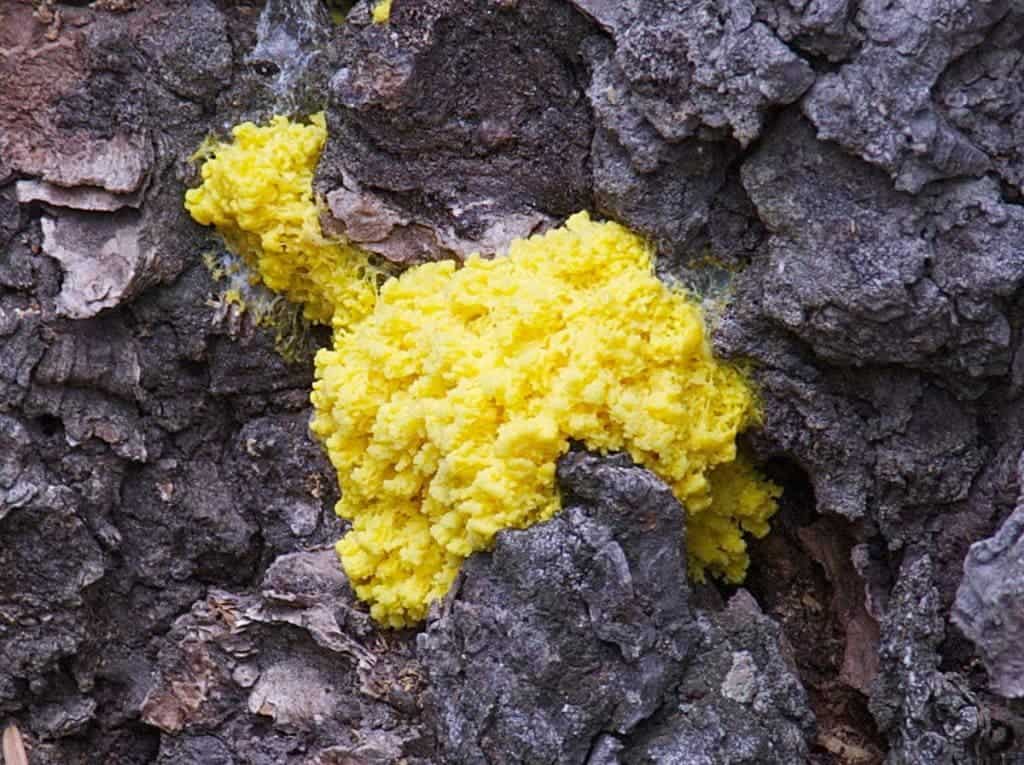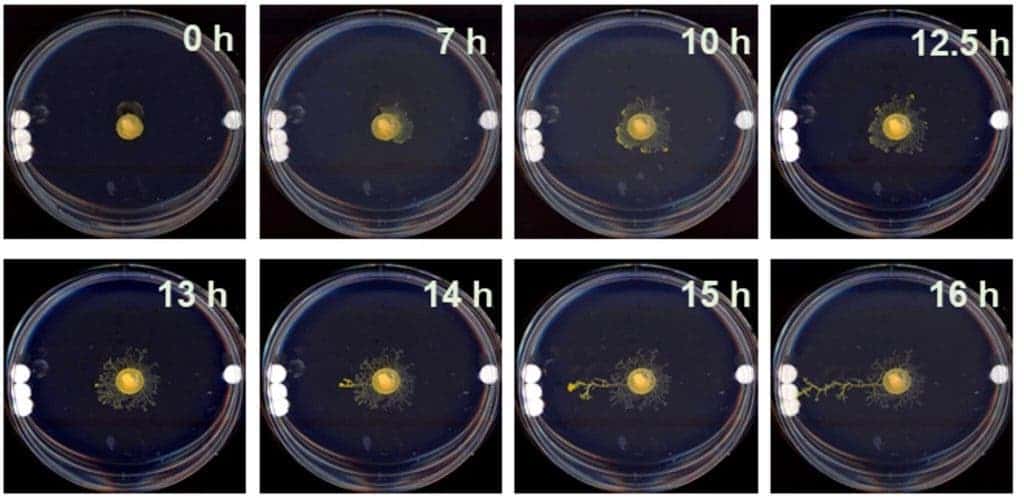Having a brain can be a pretty big advantage. Sure, you need to put a lot of energy to make it work properly, but it unlocks all sorts of cognitive processes that just wouldn’t be possible otherwise. Or… would they?
In a new study, researchers showed that a brainless slime mold uses its body to sense mechanical cues in the environment and performs computations akin to what we’d call thinking to decide which direction to go.

Extraordinary molds and how to study them
P. polycephalum is a strange creature. It’s not an animal, nor a plant, nor a fungus. It’s a protist, which pretty much means any eukaryotic organism (that is, an organism whose cells contain a cell nucleus) that is not an animal, plant, or fungus. Seriously, that’s what its Wiki page says.
But it gets even weirder. P. polycephalum is actually acellular — meaning it doesn’t have any cells, at least in its plasmodial life stage. Its main job is the decomposition of organic matter, especially in dark and humid environments like forest floors.
Researchers have done some pretty crazy things with P. polycephalum. For instance, a team of Japanese and Hungarian researchers have shown that this mold can solve the shortest path problem. They grew the mold in a maze with food (oatmeal) at the two ends of a maze and the mold retracted from everywhere in the maze except the shortest route connecting the two spots. It can even solve more complex navigational problems, sometimes with accuracy rivaling that of modern computers. The thing is (as you may have figured out by now) that P. polycephalum doesn’t have a brain. Yet it’s able to learn and navigate its environment just fine.
“People are becoming more interested in Physarum because it doesn’t have a brain but it can still perform a lot of the behaviors that we associate with thinking,” said neuroscientist Nirosha Murugan of Algoma University in Canada.
“Figuring out how proto-intelligent life manages to do this type of computation gives us more insight into the underpinnings of animal cognition and behavior, including our own.”
Normally in this type of study, the mold is given an incentive in the form of food or a chemical signal, but in this case, researchers more or less left it to its own devices. They put specimens in the center of petri dishes coated with agar gel, placed a glass disc on one side, and three small discs on the other. They then allowed the organisms to grow freely over the next 24 hours, tracking their growth patterns.

For the first 12 hours, the slime mold grew outwards evenly in all directions. But after 12-14 hours, it started to make decisions. Around 70% of the time, it extended a long branch that grew over the surface of the gel towards the three discs. It also made a remarkable decision: it chose to grow towards the three discs instead of the one, without actually exploring the area to confirm what was going on.
Researchers then tried to work out how (and why) it was doing this.
Redefining thinking
The researchers tried experimenting with different setups. For the most part, the slime would go towards the three discs — until researchers stacked the three discs on top of each other. When they did that, P. polycephalum lost its ability to navigate towards the greater mass and grew roughly equally on both sides.
So the mold wasn’t using the total mass to direct its navigation, it was something else. Turns out, that something was a slight deformation to the semi-flexible gel on the bottom of the petri dish. In other words, the three discs were deforming the bottom gel more than the single disc, and the mold was using this to direct its navigation towards what it perceived as a greater potential reward. In other words, this weird brainless creature wasn’t just drifting towards the first big thing it perceived around it — it was making a calculated decision about where to grow based on patterns of strain it was detecting in its environment.
“Imagine that you are driving on the highway at night and looking for a town to stop at. You see two different arrangements of light on the horizon: a single bright point, and a cluster of less-bright points. While the single point is brighter, the cluster of points lights up a wider area that is more likely to indicate a town, and so you head there,” said co-author Richard Novak, Ph.D., a Lead Staff Engineer at the Wyss Institute. “The patterns of light in this example are analogous to the patterns of mechanical strain produced by different arrangements of mass in our model. Our experiments confirmed that Physarum can physically sense them and make decisions based on patterns rather than simply on signal intensity.”
Researchers still aren’t certain exactly how it was sensing this, but mechanisms describing this sort of sensorial ability have been presented in previous studies. What is perhaps the most exciting thing here is the mold’s ability to use simple inputs and cellular mechanisms to make decisions.
“With most animals, we can’t see what’s changing inside the brain as the animal makes decisions. Physarum offers a really exciting scientific opportunity because we can observe its decisions about where to move in real-time by watching how its shuttle streaming behavior changes,” said Murugan.
For this type of ability to have evolved in such a simple creature, it would seem to suggest that intelligence isn’t as modern in evolutionary history as we thought. Since researchers have previously argued that slime molds have evolved multiple times throughout the planet’s history, including over 500 million years ago, we may even have to redefine just what intelligence means.
“Our discovery of this slime mold’s use of biomechanics to probe and react to its surrounding environment underscores how early this ability evolved in living organisms, and how closely related intelligence, behavior, and morphogenesis are. In this organism, which grows out to interact with the world, its shape change is its behavior. Other research has shown that similar strategies are used by cells in more complex animals, including neurons, stem cells, and cancer cells. This work in Physarum offers a new model in which to explore the ways in which evolution uses physics to implement primitive cognition that drives form and function,” said corresponding author Mike Levin, at Tufts University.
Oh, by the way, did I mention that can not just think, but it can also learn and pass on its experience?
The study was published in Advanced Materials.


